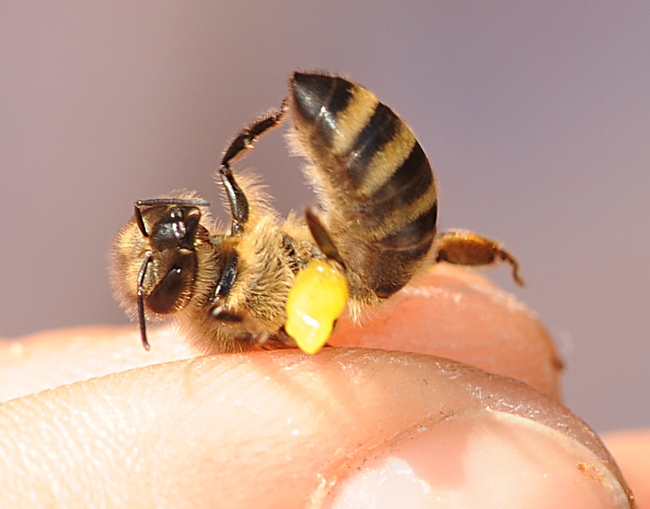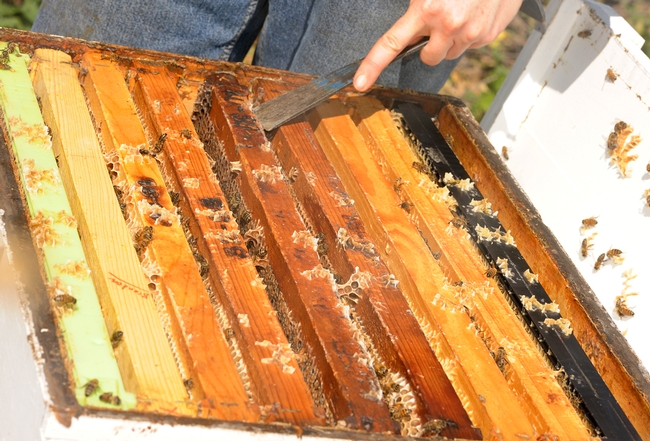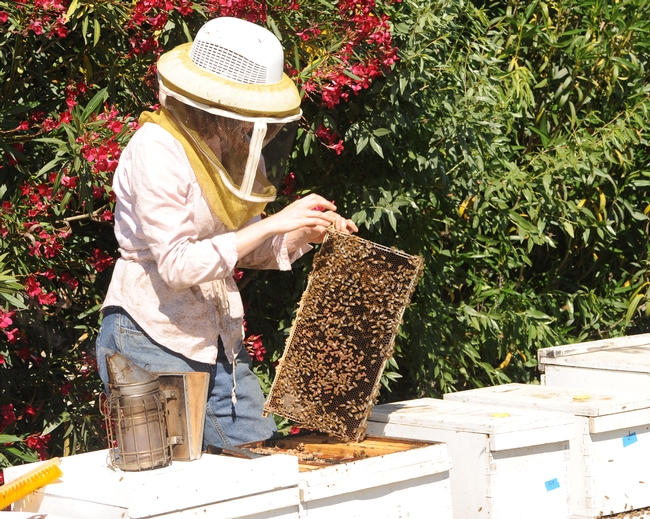Honey bee foragers collect nectar, pollen, water and propolis.
Propolis? What's propolis?
It's that sticky plant resin or "goo" that the bees use to seal small spaces in the hive. It's also known as "bee glue." When you see beekeepers using their hive tools to pry apart the frames, they're confronting that glue.
Norm Gary, emeritus professor of entomology at UC Davis and author of the newly published Honey Bee Hobbyist: The Care and Keeping of Bees, writes: "Bees use it as a caulking material to seal small cracks and crevices inside the hive, especially at the joints between chambers, making it difficult to separate hive chambers that are glued tightly together. In warm weather, propolis is sticky and pliable. In cold weather, it’s hard and brittle.”
“A few bees in each colony collect propolis during warm weather when it is pliable enough to manipulate," Gary continues. "This natural bee glue is so sticky that other bees need to assist the propolis forager during the unloading process. It’s amazing how they can manipulate it without becoming hopelessly entangled and stuck together, but they seem to manager just fine."
Bees also use propolis to narrow the entrance to their hive, or encase a large, immovable object in their colony--such as a dead mouse or lizard. Basically, they remove the smell by covering it up.
Humans also use it; it's highly marketable.
In Storey’s Guide to Keeping Honey Bees by Malcom T. Sanford and Richard E. Bonney, the authors write: “Research in human medicine has shown propolis to be an antimicrobial agent, an emollient, immunomodulator, dental anti-plaque agent and anti-tumor growth agent. Studies also indicate that it may be effective in treating skin burns.”
It's also used for such products as vehicles waxes and musical instrument varnishes. Antonio Stradivari (1644-1737) reportedly favored it for the instruments he crafted.
But have you ever seen a bee carrying a load of propolis?
Staff research associate Elizabeth Frost of the Harry H. Laidlaw Jr. Honey Bee Research Facility, UC Davis, recently noticed a bee returning to the hive with a heavy load of propolis.
Sticky, sticky stuff! Especially when temperatures hit 100 degrees.
Attached Images:

Honey bee with a load of propolis which her sisters later unloaded. (Photo by Kathy Keatley Garvey)

UC Davis beekeeper Elizabeth Frost uses her hive tool to pry open the frames. (Photo by Kathy Keatley Garvey)

UC Davis beekeeper Elizabeth Frost tending hives. (Photo by Kathy Keatley Garvey)